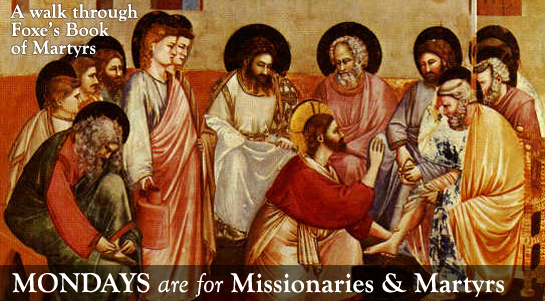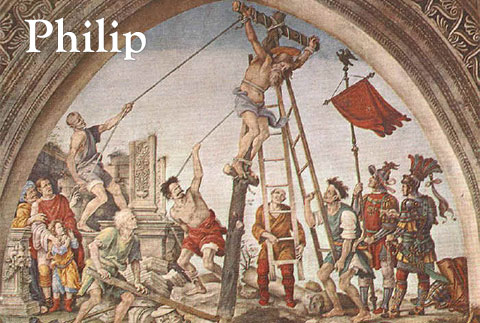
This post is part of an ongoing series, highlighting the martyrdom of the apostles, deacons, and missionaries of the first century church. Click here to read last week’s post.
“Blessed are you when they revile and persecute you, and say all kinds of evil against you falsely for My sake. Rejoice and be exceedingly glad, for great is your reward in heaven, for so they persecuted the prophets who were before you.”
Matthew 5:10-12
Meet Philip
Like the brothers, Philip and Andrew, Philip was a native of Bethsaida (John 1:44). Jesus met Jesus when the latter was about to set out for Galilee. Jesus called him to be be an apostle with the words, “Follow me.” Philip obeyed the call and later brought Nathaniel as a another new disciple (John 1:43-45). Philip is one of those apostles that we don’t know much about. However, the Gospel of John records three incidents concerning Philip during the public ministry of Jesus:
- Jesus turns to Philip before the feeding of the five thousand (John 6:5-7)
- A group of Greeks came to Philip in Jerusalem and asked if they could see Jesus. (John 12:21-23)
- After Christ explained to the apostles that He had known and seen the Father, Philip replied, “Lord, show us the Father, and it is enough for us,” to which Jesus said, “Have I been with you so long, and you still do not know me, Philip? Whoever has seen me has seen the Father.”
The ministry and death of Philip
Philip labored diligently for his Lord and Savior, Jesus Christ. He lived the rest of his life laboring diligently and answering the call of the Great Commission, preaching the gospel to the barbarous nations throughout Upper Asia. His missionary journeys came to and end when he suffered martyrdom at Heliopolis, in Phrygia. He was scourged, thrown into prison, and crucified like his Savior in A.D. 54. He was buried with his daughters.
Meet Matthew
Matthew is a man of two names. He is also called Levi in the New Testament (Mark 2:14 and Luke 5:27, for example). This is because Matthew is the Greek name for Levi and Levi is the Hebrew name for Matthew. Make sense? There’s an old saying that you can never trust a man with two names. Some Jewish acquaintances of Matthew may have felt this way about him, since he was a tax-collector who worked for the Greek-speaking Romans, collecting taxes from the Jews on their behalf. Nevertheless, the Lord Jesus Christ called this wretched tax-collector to be one of the twelve apostles (Matthew 9:9). Matthew is probably best known for writing one of the four Gospels. His is the first book in the canonical order of the New Testament.
The ministry and death of Matthew
Matthew’s missionary journey saw the conversion of many in Ethiopia and Egypt. Toward the end of his ministry, Matthew wrote his Gospel in the Hebrew tongue to extend the good news of Jesus Christ to his Jewish brothers. Later, James the Less would translate this gospel account into Greek. Matthew eventually suffered martyrdom in Ethiopia, where the king sent someone to kill him with a halberd, a type of spear.

